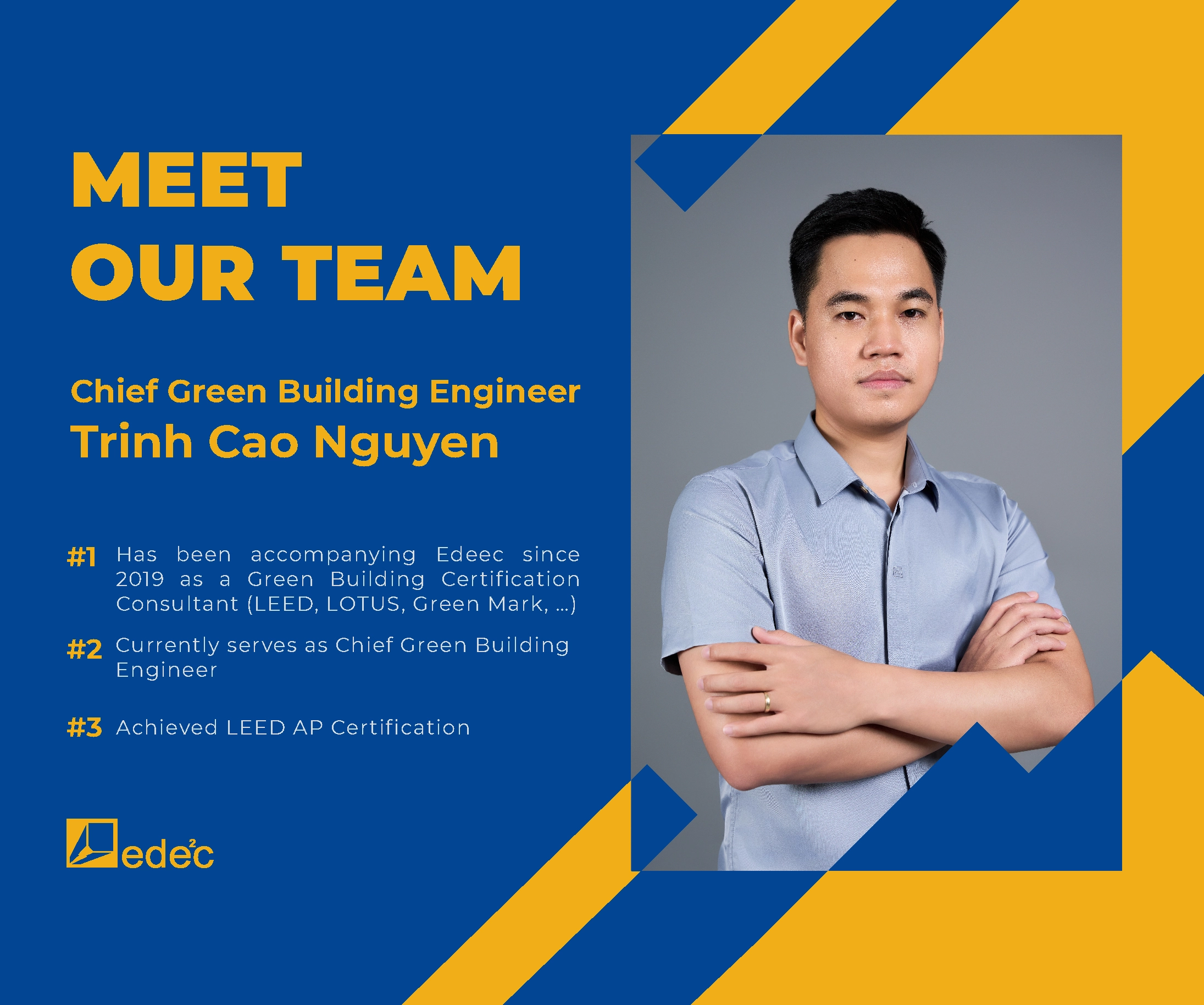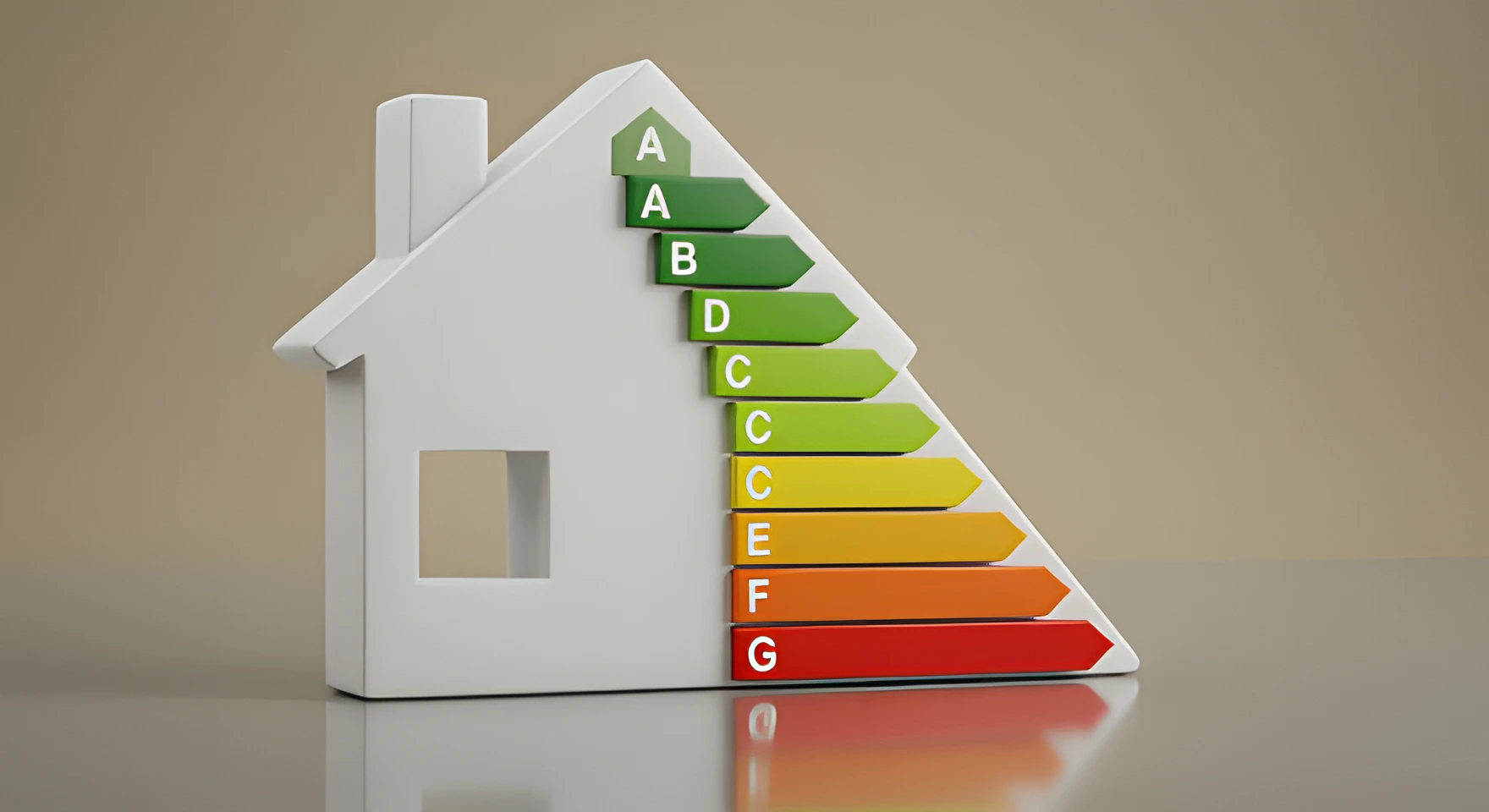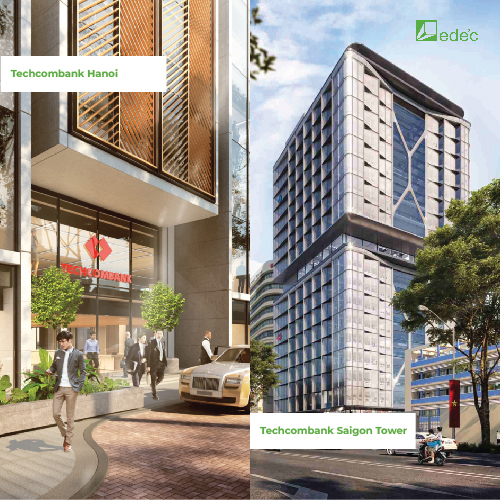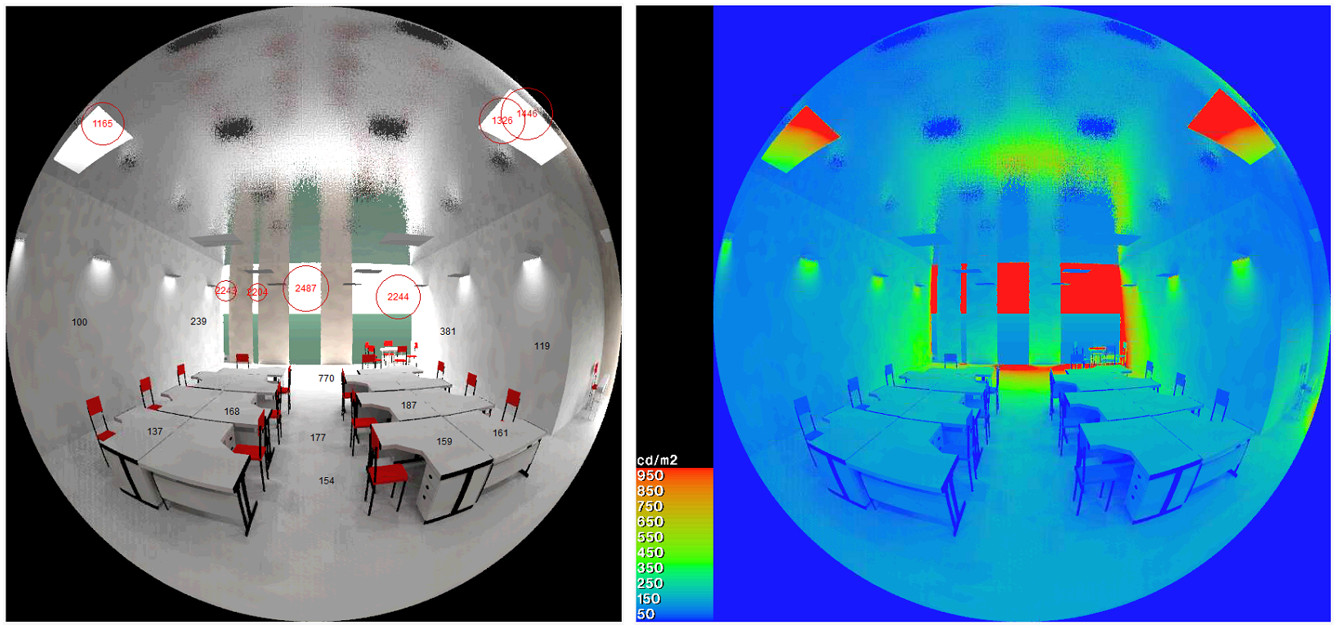RESOURCES
Green Building Development in Vietnam: Opportunities & Challenges

Eco-city is the long-term development goal of the world. The Vietnamese government must integrate and unify energy-saving programs, green buildings, urban planning, and development strategies to meet the green city criteria and raise the bar to an ecological level in order to ensure further economic development while preserving natural resources and the environment for future generations. Although there is a tool available, the time for the strong development of green buildings has not yet arrived. The reason lies in the barriers of technology, equipment, cost, and awareness. There is evidence from several climate calculation studies that if there is no tool system specifically recommended for Vietnam, there may be a wasted investment of funds on components that only play a secondary role in the energy savings of the climate project.
Read more: What is Green Building?

Green School – Seoul City, South Korea
Distinguishing concepts to guide development
Currently, in Vietnam, the concepts of green architecture, green building, sustainable architecture, and ecological architecture… are widely used terms, but there are still many personal interpretations and opinions. To have the right development direction at this point, it is necessary to clearly distinguish and define the full meaning of all three concepts: Green, Eco, and Sustainable.
As a general principle, the above suggestions tend to aim at something reasonable, economical, durable, and ultimately beneficial. So, the concept of sustainability is probably the common root for all of the above concepts. The definition of sustainable development was introduced in 1987, defined by the United Nations Commission on Environment and World Development as “sustainable development” as the process of change in which the exploitation of resources, investment direction, technical development orientation, and institutional change all harmonize and elevate both present and future potential to meet people’s needs and aspirations.
The concept of sustainable urban design is part of the global goal of sustainable development mentioned above. Also, the concept of sustainable development began to be popular and gave rise to other names from here, especially elements located in urban areas, such as parks, buildings, cars, food, etc. However, in urban areas, construction works play a particularly critical part. Together with the city, this is the component that has received many new names in line with sustainable development.
Thus, in general, they all refer to the issue of sustainability, of course, non-specialists can understand it in the sense of solidity, which is difficult to destroy. Likewise, green architecture can be misunderstood as a building or an urban area with many green colors, a lot of trees, and even green paint. Among the green and sustainable concepts, ecology seems to be the most confusing. Eco-Buildings are often described as those constructed from materials of natural origin and undergo almost no change in chemical composition. Eco also means environmentally friendly, so it is often used in conjunction with elements that use the energy of natural origin. From construction to operation, this project is completely harmless to the environment. Basically, it’s no different from green building, even if this is the highest level.
For the concept of the ecological city, green city, and sustainable city, there are many more social and community elements, along with the overall supply and discharge network. Even with the updated European criteria, it is still imperative to ensure the sustainability of surrounding resource supply areas. In addition, it is imperative to find ways to minimize the area necessary to meet urban resource requirements. Obviously, in a green (ecological) city, it is indispensable to have environmentally friendly buildings, environmental works, and green buildings in a certain proportion. Measures ranging from mandatory to encouraging implementation to adjust this rate incrementally. Connected, and interspersed with the building system is a continuous network of living elements, from vegetation to microorganisms, animals, etc. These elements create a symbiotic relationship between humans and the population, allowing it to sustain itself and develop.
Accordingly, we can say that a green city and its highest level is an ecological city, which is the world’s long-term development goal. Vietnam needs to quickly integrate and unify energy-saving programs, green buildings, urban planning, and development strategies… in order to achieve the green city criteria in the immediate future. As a consequence, the green level will gradually become the ecological level in order to compile all of the sustainable factors for economic development and to help preserve natural resources and the environment for future generations.
Green Building Development in the World
Green building development and green architecture are two different things. Green architecture is a much broader category than green building. Let’s talk about the smaller issue of green building first. Green building in Vietnam is still in concept form. There are a few projects that are starting to get green building certification under LOTUS (mostly), and a very few remaining get LEED construction certificates. However, obtaining certifications, especially LOTUS, is sometimes just a formality, and not everyone is concerned with green development from the very beginning. Even so, investors still focus solely on minimizing construction costs, sometimes reducing the quality of the design in an unworthy way… Green titles are often qualitative, without metrics. Specifically, this approach is not feasible when applied to modern buildings with many equipment and technologies.
Green building development is a matter of saving resources and creating a good living environment for people. Currently, the trend in the world is to focus on saving energy (both in building operation and in the production of building materials) because it can greatly reduce CO2 emissions in the long run. However, energy is an elusive concept, and does it have the same shape as saving water? Therefore, the practice of thrift has many difficulties in practical implementation, not only in Vietnam.

Solar battery system and trees on the roof of the building
The countries of the Anglo-American system have a well-developed scientific background, and a solid foundation of engineering physics and equipment, so they develop building energy calculation tools under the support of policy or self-developed state agencies such as the US Department of Energy. The development of green buildings has since grown rapidly, with strong competition among design consultants to obtain green building certificates. Although the European system is behind in terms of design technology, it is not so slow. European countries also have a strong scientific background. Their way of doing things is mainly based on state policies, compulsory construction laws, and encouraging investment in solutions. The policies and technical solutions are researched by the government and researched by leading companies in the field of sustainable research and development. Thus, in only about 10 years, most of the policies and strategies have become reality. Even synchronous practice, which inherited the American experience, has advanced Europe’s green development programs. This is because it is in line with the region’s history, culture, and economy. One of the most outstanding features of the European green development program is that it has brought humanity into community life right in high-density and extremely high-density urban areas. This is an incredibly valuable point that Vietnam should learn from.
To do so, Europe’s sustainability agenda reaches beyond just the concept of green buildings. In their approach, the solution lies directly in the development of sustainable urban areas, green cities, and ecological cities. Consider the city as a living organism, with its own rhythm of life and the task of balancing the “eating” and “waste” of this living organism. This is a revolutionary concept and if applied in Vietnam, it will create a big change in the quality of urban planning.
Green cities will of course include green buildings and a network of trees and water throughout the city (a green and blue network). Europe is called the old continent. The number of old buildings is very large, so it is much more critical to improve energy efficiency for old buildings than to build new green buildings. This requires special policy support in a very specific way. For example, from 2008 Paris supported 500 – 1500 Euros for single families to renovate and repair their houses. Technical solutions and surveying are provided free of charge. Equipment using solar hot water, and wind turbines have been subsidized since the early 2000s…
In Europe, public transport and inter-city transport are of particular interest. This helps residents get rid of their dependence on personal vehicles. European residents will also benefit from this walk-and-cycle culture. Its value lies not only in reducing emissions but, more importantly, in improving the physical health of urban residents. Since then, the creation of courtyards, gardens, public squares, and alternating walkways is concerned with creating community communication, social cohesion, and cultural development. These are very fundamental points when developing green architecture in Vietnam.
Building a Green Building Standards System in Vietnam
Currently, Vietnam has a set of energy saving standards 09:2005, which is the only current standard on building energy saving. Yet the implementation of this standard is very limited, even unknown in the world of engineering and architecture. This is a very unfortunate point. This stems from the complexity of regulations as well as the laxity of construction investment management. After the efforts of the Ministry of Construction and the Department of Science and Technology – the Ministry of Construction, in 2013, the Ministry of Construction is expected to issue a revised, easier-to-apply, and sanctioned standard to make the standard an indispensable part of designing works. This is a very significant and necessary step, demonstrating the determination of the Ministry of Construction in improving the quality of construction works in the coming time.
In addition to state standards, an extremely valuable effort of the International Green Building Council for Vietnam is the LOTUS green building assessment system developed by VGBC.
The Vietnamese experts also made certain efforts such as establishing the Vietnam Green Architecture Association, and the Vietnam Green Building Association. However, these names only exist on paper and have not had significant activities to resonate in society. Partly because the basic scientific foundation of engineering works and equipment in Vietnam is currently lagging far behind the world. The lack of and weak support of state policies is also a reason hindering the development of green architecture.
Currently, VGBC intends to transfer the LOTUS system to the Vietnamese side according to the roadmap, from which it is possible to see a consolidation trend in the far future for all the currently branching green building names.
Although there is a green building assessment tool, the time for the strong development of these buildings has not yet arrived. The cause of the problem lies in the barriers of technology, equipment, cost, and perception. Green buildings thrive mainly in developed countries, where science and technology are developed. The development of green buildings in Vietnam cannot be without this factor. Unfortunately, the thermal engineering industry in Vietnam is still limited and has not kept pace with the world’s trends. This is a point that European leaders understand very well. In the Netherlands, there is even a slogan: The more precise the engineering science, the higher the sustainability. The relationship between these two issues in Vietnam has not been properly assessed. Thus, there has been a lot of awareness raising about green buildings in Vietnam recently, but there are very few green buildings. Vietnam’s thermos-science works are also calculated with the old method, which contains many errors, and is no longer appropriate for today’s needs. This is a root issue and needs to be addressed as soon as possible.
Currently, a few construction investment units (such as BIDV Investment Development Bank, and One Building – United Nations) choose the US LEED system as the evaluation tool for the BIDV headquarters. This is a pioneering work and effort to popularize green building in Vietnam and more importantly, to enhance the brand name while ensuring the reduction of operating costs. However, LEED is a system for the United States, where the climate and investment conditions are completely different from Vietnam. Several climate calculations in the work indicate that, without a separate instrumentation system tailored to Vietnam, there may be wasted investments in components that serve a secondary role in climate project energy savings. For example, invest in reducing wall thermal conductivity to less than 1.8 W/m2.K. This is very effective in temperate countries, but in Vietnam, the increase in investment and efficiency is so small that the payback period can be as long as 100 years. Therefore, the science of environmental and social sustainability of buildings plays a huge role in both technical and economic terms. Unfortunately, this platform is being forgotten, especially during the recent real estate bubble.
Thus, it can be seen that the training of engineers and the interest in science have always played an important role in economic development. When inadequacies arise, losses in investment, in operation appear with specific energy and financial figures, it is also time to raise the level of the team of engineers and architects.
And regardless of any assessment tool, the most important tool for implementing green architecture and implementing green cities is a team of fully trained engineers and architects properly compensated.
The reality of today’s profession is that architects have to play too many roles, from design, to relations, to management, to painters, with the lowest design fee in the world (~2% of the value of the work compared to the world) with 8-10% in other countries). In other words, by assessing gray matter too low, too different from the world, we end up wasting energy, wasting resources, polluting the environment… This makes gray matter an invaluable resource, especially since gray matter is not evaluated properly. This is the biggest difference in implementing green building in Vietnam compared to other countries in the world.
MSc.KTS.KS Tran Thanh Vu – Founder of Edeec, President of IBPSA Vietnam






